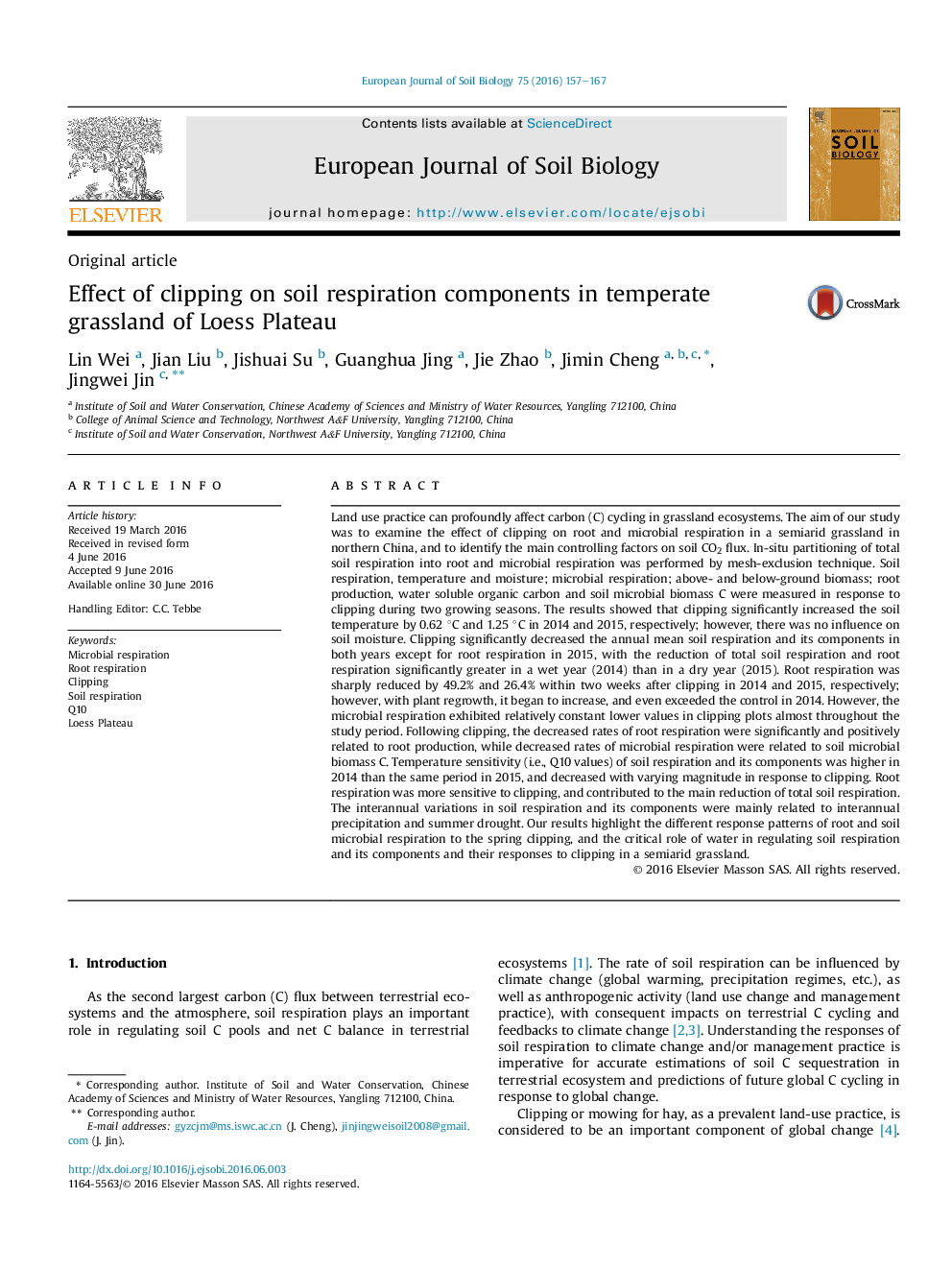| Article ID | Journal | Published Year | Pages | File Type |
|---|---|---|---|---|
| 4391649 | European Journal of Soil Biology | 2016 | 11 Pages |
•Clipping significantly decreased the annual mean soil respiration and its components, except for root respiration in 2015.•Root respiration decreased immediately after clipping, then increased and even exceeded the control with plant regrowth.•Clipping reduced microbial respiration throughout the study period.•Precipitation/soil moisture played a critical role in regulating the response of soil respiration and its components to clipping.•The Q10 value of root respiration was higher than that of microbial respiration.
Land use practice can profoundly affect carbon (C) cycling in grassland ecosystems. The aim of our study was to examine the effect of clipping on root and microbial respiration in a semiarid grassland in northern China, and to identify the main controlling factors on soil CO2 flux. In-situ partitioning of total soil respiration into root and microbial respiration was performed by mesh-exclusion technique. Soil respiration, temperature and moisture; microbial respiration; above- and below-ground biomass; root production, water soluble organic carbon and soil microbial biomass C were measured in response to clipping during two growing seasons. The results showed that clipping significantly increased the soil temperature by 0.62 °C and 1.25 °C in 2014 and 2015, respectively; however, there was no influence on soil moisture. Clipping significantly decreased the annual mean soil respiration and its components in both years except for root respiration in 2015, with the reduction of total soil respiration and root respiration significantly greater in a wet year (2014) than in a dry year (2015). Root respiration was sharply reduced by 49.2% and 26.4% within two weeks after clipping in 2014 and 2015, respectively; however, with plant regrowth, it began to increase, and even exceeded the control in 2014. However, the microbial respiration exhibited relatively constant lower values in clipping plots almost throughout the study period. Following clipping, the decreased rates of root respiration were significantly and positively related to root production, while decreased rates of microbial respiration were related to soil microbial biomass C. Temperature sensitivity (i.e., Q10 values) of soil respiration and its components was higher in 2014 than the same period in 2015, and decreased with varying magnitude in response to clipping. Root respiration was more sensitive to clipping, and contributed to the main reduction of total soil respiration. The interannual variations in soil respiration and its components were mainly related to interannual precipitation and summer drought. Our results highlight the different response patterns of root and soil microbial respiration to the spring clipping, and the critical role of water in regulating soil respiration and its components and their responses to clipping in a semiarid grassland.
